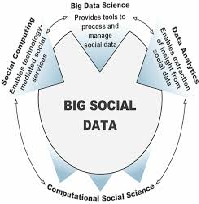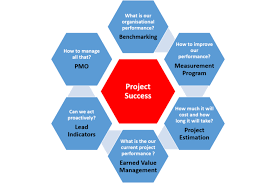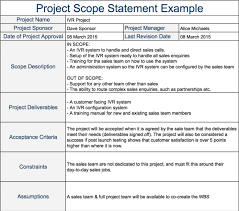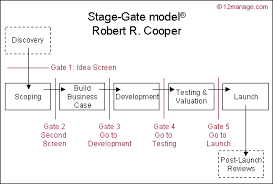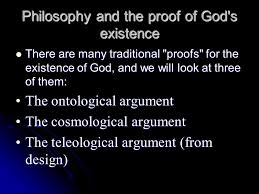
Proofs of God Existence
Proofs of God Existence
Order Instructions:
Title:Proofs of God Existence of God)
Pages: 8 excluding the bibliography & title page
For the critique find a recent (last 25 years) peer-reviewed scholarly journal article of 10–20 pages on an area of theology covered in this course. Such journals are The Journal of the Evangelical Theological Society, Bibliotheca Sacra, Grace Theological Journal, and the Westminster Theological Journal and are NOT magazines like Christianity Today, Visions, etc., The Online Student Library Services at www.liberty.edu/informationservices/ilrc/library/
**DO NOT USE ANY OUTSIDE SOURCES
I. Introduction as a brief summary of the content of the article (1–2 paragraph). Include:
A. The author’s purpose, goal, context, question, and/or issue; indicate to your reader what the broader topic of the article is.
B. Can you identify the author’s thesis? HINT: compare the opening paragraph with the conclusion to identify what was promised vs. what was claimed by the author. NOTE: do not confuse an author’s purpose with his/her thesis. The purpose may tell why the author is writing, or what the goal might be, but a thesis takes a position or stance to fulfills that purpose or goal. Suppose an article’s purpose is to describe pre-Fall Eden, or clarify a distinction between physical and spiritual death. The thesis would be the position that takes a stance to achieve that goal: “The death of leaves occurred during photosynthesis in Eden prior to Adam’s sin, which is a kind of ‘death’ within pre-Fall Eden.” Locate that “position” statement.
C. The brief overview need be only a few sentences so your reader knows the article’s overall argument. Do not fill the JAC with in-depth summary. Leave space for the next component, which is more important if you wish to get full points.
II. Critical Interaction (2–paragraph)
A. “Critical” here does not mean to criticize, to find something wrong, or to dislike something. Instead, in academic writing it is to compare/contrast scholarly positions. So, just show how the article’s author compares/contrasts to the way Erickson or an Elwell article discusses the same issue (you may use other scholarly works, the textbooks are just a recommended pair of sources, but you may use others, too).
B. What strengths can you affirm or weaknesses expose through this process? This is how you make your voice heard in the interaction between these scholars.
C. When you reference the critiqued article, the one on the cover page, you do not need to use footnotes, you can just cite page #s in parentheses (p. 123). Other citations must use footnotes in the “Notes & Bibliography” style (chs. 16-17) of Turabian.
III. Conclusion (1 paragraph)
A. Note omissions that seem glaring, but be cautious. No one can say everything in an article. An OT scholar may not refer to NT texts, so it may be unfair to point that out
B. Questions you can raise or applications you can make are good here (e.g., how will it be useful in your paper; how your own theological positions may have changed, etc.) Bibliography On a new page, under “Bibliography,” list the three or more works cited by you: the article itself plus the two or more outside sources. Alphabetize this list. Follow the “Notes & Bibliography” style for Bibliography entries (the “B” examples in chs. 16-17 of Turabian).
Format using Turabian’s “Notes & Bibliography” style1 (see chs. 16-17 in Turabian): • Use Turabian footnotes; not endnotes, parenthetical citations (chs. 18-19), MLA, or APA. • Use 12-pt Times New Roman font (you may format “Footnote Text” style for 11 or 10 point font if you wish). • Double-space body text. However, single-space footnotes, Bibliography entries, block quotes, and headings (these then need an extra blank line after for visual separation; if you right click in any text and choos “Paragraph…” you can set spacing “After”). • Keep headings simple: Introduction, Critical Interaction, Conclusion, Bibliography would be sufficient (cf. Tur. ed. 8, pp. 391-92, or the Seminary Writing Guide). • Use 1” margins all sides; use left justified paragraphs, leaving ragged right margins; use a 0.5 in. first line indentation for body text paragraphs. • Omit extra spacing between paragraphs (MS Word has a default 8 or 10 pt space after paragraphs that must be set to 0). Any style in MS Word documents can be modified in the “Format” menu: Format > Style… > highlight “Normal” in the list of styles > Modify > Format > Paragraphs… to set spaces “After” each paragraph to “0.” • NOTE: “local guidelines” for the Seminary’s Writing Guide supersede Turabian 17.2 (http://www.liberty.edu/seminary/index.cfm?PID=28160). Just omit the reference that commercial databases such as ProQuest, EBSCOhost, etc., attach to journal articles. Cite as print articles (any PDF actually is a scanned print page).
SAMPLE ANSWER
Introduction
Different opinions relating either in favor of the existence of God or in opposition has remained a controversial element for a considerable period. It is therefore essential to note that most of the affirmations that have existed in proving the presence of God are primarily based on the mysteries that are involved in nature and the origin of humanity and the universe. In as much as the existence of God remains an objective matter, Mander’s approach in proving his existence remains one of the efficient approaches geared towards removing the doubts that exist in the human mind. This paper therefore seeks to carry out a critique on the factors that prove God’s existence.
Thesis
The author’s thesis therefore provides the fact that God’s existence determines the reasons why the universe and its contents are present.
In his introduction Mander gives a depiction of his own existence and alleges that he is a thinking thing. Mander therefore takes the opportunity of eradicating the element of doubt on the perception that his sensory experiences may not exist outside him but do exist inside him[1]. In the conclusion of the author provides a substantial factor that human beings may not exist independently considering the fact that they have been created by an infinite being that is eternal, independent and hold a higher power and intelligence[2]. The author in his conclusion therefore alleges that this infinite being remains the rationale behind the existence of humanity and everything surrounding him, a factor that points out to the fact that the being is God.
The author’s purpose in this paper is therefore aimed at establishing the validity of God’s existence amidst the different merging schools of thought that oppose this fact[3]. This therefore determines the fact that the goal of the author is in developing a ground that ensures a belief in God’s existence, a factor that has been supported by several literatures. This paper therefore provides a hypothesis that seeks to address:
- How we acquired the concept of God
- Where scientific laws find inclination on God
- Where the sense of right and wrong come from.
Zhang on the other hand believes that it is necessary to prove the existence of God which remains a crucial element in establishing the reasons why human beings and nature exist. According to this author, the desires of people has led them into a state of emptiness and lack, a factor that has seen humanity fail to notice the emptiness and lack, that would be filled by the presence of an ideal presence[4]. Zhang through this literature therefore seeks to provide proof on the existence of God.
Having assented to the fact that God exits, this author takes another view and determines to seek answers the question as to why human beings acquired the concept of God. In developing a response to this, Zhang also gives a description of three ideologies: adventitious, innate and factitious. The concept of adventitiousness is determined by the knowledge that human beings gain through the process of life. The factitious ideas on the other hand are determined to be the ideas that we gain from our creative imaginations and lastly ran innate idea is considered as an idea that comes from within us. According to this author, this definition gives a clear depiction of the fact that the acquisition on knowledge possessed by human beings on the existence of God is something that human beings are born with and which God placed in every individual[5].
Descartes’ clear perception is therefore guided by the fact that God exists and this is as a result of his perfection. In justifying this Descartes’ gives an elusive illustration and mentions that in order for an individual to be considered a betrayer[6], there must have been a detection of some faults. Considering the fact that God is perfect ad infinite the element of God being a deceiver betrayer is unjustified.
- Critical Interaction
In the authors approach in proofing the existence of God, he takes a closer look at two things, the essence and his existence. Before having knowledge on something that exists one is always aware of the essence. This therefore means that in determining the essence of things it is required that a thorough understanding on the reasons why certain things exist and are not available is determined. This therefore gives a depiction of the manner in which human beings perceive things.
Mander’s views weighed upon the lenses of the arguments of Siniscalchi (2013) on the essence and existence of God tends to agree on some issues. Siniscalchi alleges that the existence of God is an element that may not be proved or disapproved. According to this author, the scriptures take stance in bridging this gap with the element of faith on the fact that God exists (pp.697). The author brings in context Hebrews 11:6 and states that scriptures confirm that anyone who comes closer to God needs to have some element of belief on the fact that God exists and rewards those who commit to seek Him. However, this scripture leaves a lot to be determined. In any case God exists as is claimed then chances are He would appear to prove his existence to the world which is sceptic about this factor[7]. However this would therefore means that if God revealed his existence to humanity, the element of faith would lose its true meaning.
Siniscalchi (2013), in his journal alleges that it is essential to denote that God is not a thing that anyone can be moderately interested in[8]. According to Siniscalchi, if God’s existence cannot be proved then there are no reasons why humanity is interested in proving his existence. This author therefore supports Mander’s views on the fact that human beings are empty and need a vacuum to fill the emptiness in their hearts. This emptiness can never be filled by any other thing but by God who created and authored our lives[9]. The knowledge on God’s existence may therefore be denied on intellectual grounds but the presence and existence of God in humanity and around human beings remains an obvious element. Considering the fact that different people through the face of history and in all civilizations and culture believe in this existence, there is a rationale behind it.
Siniscalchi therefore brings into light other logical arguments that support the existence of God. The author therefore argues that God is a being which cannot be conceived, a factor that depicts the fact that God’s existence if greater than his nonexistence[10]. This point therefore takes an ontological stand that explains the fact that if Go did not exist then there would have not been a greater being who would have been conceived, a factor that would contradict God’s definition. Mander’s views in line with this factor therefore tends to slightly vary considering the fact that this author believes that since the universe plays a significant role in life, then there is a initiator of the universe.
Desecrates gives an illustration by alleging that if the earth was situated closer to the sun, the world would have experienced numerous challenges considering the fact that the earth would not be a conducive place to live in since everything would die. This therefore provides a fact that there is a designer who figured out everything in the creation of the universe. According to Hunter (2015), God’s existence can be proved by the fact that everything and every effect in the face of the universe have causes. The universe and everything that exists in it according to Sousa are underpinned to have had a cause since they are effects[11]. This author therefore proves his point by supporting the idea of Siniscalchi in proving that there is a force behind the existence of everything and the cause is attributed to God.
Mander on the other hand takes a moralist argument in proving the existence of God by alleging that in every culture throughout the source of history, there is an element of law that determines the rights and wrong in the society. As a result of this, human beings are aware of the rights and wrongs, a factor that has seen individuals avoid murders, thefts, lies and immoral actions rejected universally. This sense of right and wrong according to this author therefore emanates from God.
Having determined this, I believe the views of the authors can be tested by scripture in determining the fact that God exists. It is essential to mention that the scripture mentions that people at some point will reject the word of God on the knowledge of God’s existence and choose to focus on lies, a factor that can be substantiated in this case[12]. As featured in Romans 1:25, Humanity will exchange the truth of God for lies and choose to worship created things rather than the true God who needs to be praised forever. It is therefore essential to note that people have no proper excuses on proving the existence of their creator considering the fact that God has invisible qualities. However, as scriptures determine in Romans 1:20, his eternal power and divine nature can be depicted and understood in order to make men find no excuse.
Conclusion
As determined in this study, different opinions relating either in favor of the existence of God or in opposition has remained a controversial element for a considerable period. This therefore provides the fact that most of the affirmations that have existed in proving the presence of God are primarily based on the mysteries that are involved in nature and the origin of humanity and the universe. It is therefore essential to mention that people tend to refute God’s existence as a result of the influences that have been wrought by science that seek to determine proofs on the existence of God. Humanity therefore forgets the fact that the creation of the universe and everything in it is a science that was authored by the same God. It is therefore essential to note that God remains the rationale behind the existence of humanity and everything surrounding him, a factor that points out to the fact that the being is God
This knowledge is therefore vital in the contemporary society since its shapes the community into realizing that humanity needs to be responsible for God and they need to live lives that reflect the true image of God. Considering the fact that God exists, we need to remain accountable to him with our lives and actions. If in any case we are influenced to believe that God does not exist, then we can do whatever pleases us without worrying about God’s judgment. It is therefore essential to note that even those who deny the existence of God still believe and have never found answers to the development of the universe.
Christians therefore need to consider that God’s existence can be felt in their everyday lives since God is spoken of every single moment. Even when his audible words may not be heard, but his presence can be felt and his leading as well. It is also essential for Christians to embrace the love of God and desire in his grace. This knowledge should therefore be shared with other Christians with the aim of strengthening their faith on God since several ideologies are emerging to challenge the existence of God.
References
Hunter, H 2015, ‘George Berkeley’s proof for the existence of God’, International Journal For Philosophy Of Religion, 78, 2, pp. 183-193, Academic Search Premier, EBSCOhost, viewed 5 February 2016.
Mander, W 2013, ‘On arguing for the existence of god as a synthesis between realism and anti-realism’, International Journal For Philosophy Of Religion, 74, 1, pp. 99-115, Academic Search Premier, EBSCOhost, viewed 5 February 2016.
Mizrahi, M 2012, ‘Jewish Survival, Divine Supervision, and the Existence of God’, Shofar: An Interdisciplinary Journal Of Jewish Studies, 30, 4, pp. 100-112, Academic Search Premier, EBSCOhost, viewed 5 February 2016.
Siniscalchi, GB 2013, ‘New Proofs for the Existence of God: Contributions of Contemporary Physics and Philosophy’, Heythrop Journal, 54, 4, pp. 696-697, Academic Search Premier, EBSCOhost, viewed 5 February 2016.
Sousa, D 2014, ‘Epistemic Probability and Existence of God: A Kierkegaardian Critique of Swinburne’s Apologetic’, Heythrop Journal, 55, 1, pp. 45-58, Academic Search Premier, EBSCOhost, viewed 5 February 2016.
Wee, C 2012, ‘Descartes’s Ontological Proof of God’s Existence’, British Journal for the History of Philosophy, 20, 1, pp. 23-40, Academic Search Premier, EBSCOhost, viewed 5 February 2016.
Watts, David. “New Proofs for the Existence of God: Contributions of Contemporary Physics and Philosophy.” Science & Christian Belief 24, no. 190-191. Academic Search Premier, EBSCOhost (accessed February 13, 2016).
Zhang, L 2014, ‘A Logical Reflection on the Modal Argument for God’s Existence’, Philosophical Forum, 45, 3, pp. 273-284, Academic Search Premier, EBSCOhost, viewed 5 February 2016
Introduction
It is essential to note that the scriptures were authored for everyone with the authors having a particular audience in mind. Fee and Stuart allege that the interpretation of the scriptures is required in determining its external relevancy and historical particularity. This therefore depicts the fact that the Bible is a divine revelation that needs to be humanly communicated. An individual therefore needs to understand the meaning and the intent of the original writer by conducting an exegesis and use sound hermeneutic to evaluate the scriptures contemporary significance and apply that in life.
According to Fee and Stuart the best approach in the interpretation of the Bible would be the consideration of the textual and linguistic approach. They explain that the textual issues are primarily focused on determining the original text and its linguistic focus on an individual’s translation. Theories of translation on the other hand vary from scripture to scripture, a factor that requires the readers to think contextually. This paper therefore seeks to determine the manner in which scriptures can be read for all its worth.
Critical Analysis
In interpreting the epistles, it is essential to consider the element of cultural relativity that primarily focuses on determining what needs to be transferred to the first century from the transcendent truth. It is essential to note that a text may not mean what it wouldn’t have meant to its author or to the readers[13]. Additionally, when sharing the same situation with the original audience, it is essential to note that the message for us still remains the same. Through a careful exegesis, a reader can reveal the principles that may extend to the contemporary application of the scriptures. This therefore means that a reader needs to resist extrapolating too far from the intent of the writer.
In the fifth chapter of Stuart and Fee’s book the author takes a look at the narratives that gives a depiction of Gods story that is based on the historical events. The Biblical narratives give stories that have a timeless significance to the readers. Fee and Stuart therefore give the three levels of narratives in which they mention the top level that is considered as the metanarrative that comprises of the big picture of the redemptive history that begun from creation to the eschaton[14]. The second level is comprised of Gods approach in redeeming humanity through the major covenants. It is therefore essential to consider the fact that the first level comprises of the stories that consist of the characters, plot, and plot resolution that gives a depiction of the three caveats that are expressed through allegories that are full of hidden meaning that is intended to teach moral lessons to the readers.
The sixth chapter provides a hermeneutical suggestion on the elements of biblical precedence. The author depicts that the book of Acts is divided into six panels that are delineated by short summaries and statements. Each panel therefore briefly builds upon another by giving an overall thrust of the expansion of the Church into the Gentile community through the power of the Holy Ghost[15]. The theme of the books therefore remains in setting a path for the expansion of the church outside Jerusalem. The authors therefore allege that in interpreting this narrative, it is essential not to use an analogy that is based on the biblical precedents as the authority for contemporary practice. Additionally, Fee and Stuart also allege that biblical narratives always have illustrative patterns that can be seen as repeatable even when they are not normative.
On the Gospels, Fee and Stuart alleges that these are unique genres that are characterized by layers of context. Considering the fact that they were written decades after the main events recorded, the readers need to consider the historical context of the authors[16]. The context of Jesus can therefore be assimilated by taking a deep look at the first century of Judaism in Israel. The reader therefore needs to think horizontally by reading each periscope with the awareness of the parallels that are involved. On the other hand, the readers also need to think vertically by recognizing the historical context of the authors and Christ. The eighth chapter of the book gives an interpretation of the parables as they were used by Jesus. Fee and Stuart therefore alleges that the main idea in the parables is that they were designed to proclaim the kingdom by calling forth a response.
In the ninth and tenth chapter of the book, Fee and Stuart depict how to deal with the laws and prophets. In this, it is essential to consider the fact that the readers need to understand the nature and the role of the law in Israel in order to ask the relevant questions on how this can be applied under the dispensation of the new covenant. God’s law for Israel was therefore the approach used in binding the readers through a vassal relationship[17]. In this case, the Old Testament is comprised of civil and ritual laws that enforce the conduct of the public on religious practices that have to be renewed.
In as much as Christ renewed the potions of these ethical codes, it is essential for the readers to understand that these can be explicitly renewed and applied today. It is therefore essential to understand that the laws are covenant stipulations in which the roles of the prophets need to be focused on first[18]. The prophets served primarily as Gods spokesmen and the enforcers of the covenant. These books are therefore a collection of the spoken oracles that are presented in their unique chronological sequence. It is therefore recommended that in interpreting these books, there is a need to read the Biblical dictionary before understanding the prophetic books.
According to Fee and Stuart, the Psalms remain complicated in interpreting and understanding since they are considered as prayers to God within the ancient context. The element of Hebraic poetry is therefore drenched in the Psalms through an emotional language that is spoken from the heart. The authors of the Psalms therefore use the element of synonymous parallelism as a device that elaborates the ideas within the repeated textual unit[19]s. It is therefore essential to consider the fact that there are seven categories of the psalms that include: hymns of praise, laments, thanksgiving, salvation histories, creation and affirmation, the wisdoms and the songs of trust. This therefore gives the impression that each of these categories has a formal structure and serves a particular function within the culture of the Israelites.
The books of Provers, Ecclesiastes, and the Song of Songs are categorized as wisdom literatures that depict the right position with God as compared to intelligence. The book of Job therefore bases its theme on the element of the happenings of life[20]. On the other hand, the book of Ecclesiastes gives a similar idea that remains challenging to discern. Song of Songs is considered as a love literature that can be understood through allegories. In interpreting these books, it is essential to avoid taking verses out of their context and giving them meaning that was not intended by the authors.
Fee and Stuart also take a look of the book of Revelation that they consider complex considering the fact that its genre is multifaceted with a combination of prophecies, apocalypse and letters. The authors therefore give the characteristics of the apocalypse that include their dependency on the Old Testament prophetic literatures, there approaches of including visionary literatures, the use of imagery in the books and the use of stylized literary genre[21]. The book of revelation therefore involves prophecies that are written by John on behalf of God. The book therefore entails seven letters that are addressed to seven churches with the central theme that aimed to show the manner in which the church and the state are in a collision and victory tends to belong to the state.
Conclusion
Fee and Stuart allege that the interpretation of the scriptures is required in determining its external relevancy and historical particularity. This therefore depicts the fact that the Bible is a divine revelation that needs to be humanly communicated. The central element to consider when interpreting the scriptures is that the readers need to think in paragraphs as opposed to holding thoughts in verse in ascertaining the larger context. It is additionally essential to consider the fact that scriptures may not mean what the author never intended for the readers.
References
Bergant, Dianne. 2015. “How to Read the Bible For All Its Worth.” Bible Today 53, no. 4: 256-257. Academic Search Premier, EBSCOhost (accessed February 21, 2016).
Briggs, Richard S. 2015. “Biblical Hermeneutics and Practical Theology: Method and Truth in Context.” Anglican Theological Review 97, no. 2: 201-217. Academic Search Premier, EBSCOhost (accessed February 21, 2016).
Galli, Mark. 2015. “The New Battle for the Bible.” Christianity Today 59, no. 8: 31-33. Academic Search Premier, EBSCOhost (accessed February 21, 2016).
Gordon D. Fee and Douglas K. Stuart, How to Read the Bible for All Its Worth, 3rd ed. (Grand Rapids, MI: Zondervan Publishing House, 1993), 21.
Samuel, Leonora. 2005. “Accentuation: A Tool For Interpreting The Text Of The Hebrew Bible.” Jewish Bible Quarterly 33, no. 3: 174-183. Academic Search Premier, EBSCOhost (accessed February 21, 2016).
[1] . Mander, W 2013, ‘On arguing for the existence of god as a synthesis between realism and anti-realism’, International Journal For Philosophy Of Religion, 96
[2] . Mander, W 2013,97
[3] . Mizrahi, M 2012, ‘Jewish Survival, Divine Supervision, and the Existence of God’, Shofar: An Interdisciplinary Journal Of Jewish Studies, 30, 4, pp. 110
[4] . Zhang, L 2014, ‘A Logical Reflection on the Modal Argument for God’s Existence’, Philosophical Forum, 45, 3, pp. 275
[5] . Zhang, L 2014, 276
[6] . Wee, C 2012, ‘Descartes’s Ontological Proof of God’s Existence’, British Journal for the History of Philosophy, 20, 1, pp. 25
[7] . Hunter, H 2015, ‘George Berkeley’s proof for the existence of God’, International Journal For Philosophy Of Religion, 78, 2, pp 185
[8] . Siniscalchi, GB 2013, ‘New Proofs for the Existence of God: Contributions of Contemporary Physics and Philosophy’, Heythrop Journal, 54, 4, pp. 696
[9] . Siniscalchi, GB 2013, 698
[11] . Sousa, D 2014, ‘Epistemic Probability and Existence of God: A Kierkegaardian Critique of Swinburne’s Apologetic’, Heythrop Journal, 55, 1, pp. 45
[12] . Watts, David. “New Proofs for the Existence of God: Contributions of Contemporary Physics and Philosophy.” Science & Christian Belief 24, no. 190-191
[13] . Gordon D. Fee and Douglas K. Stuart, How to Read the Bible for All Its Worth, 3rd ed. (Grand Rapids, MI: Zondervan Publishing House
[14] . Ibid. pp. 20
[15] . Bergant, Dianne. 2015. “How to Read the Bible For All Its Worth.” Bible Today 53, no. 4: 256-257.
[16] . Ibid. pp.21
[17] . Briggs, Richard S. 2015. “Biblical Hermeneutics and Practical Theology: Method and Truth in Context.” Anglican Theological Review 97
[18] . Ibid. pp. 201
[19] . Galli, Mark. 2015. “The New Battle for the Bible.” Christianity Today 59, no. 8: 31-33.
[20] . Ibid. pp 32
[21] . Samuel, Leonora. 2005. “Accentuation: A Tool For Interpreting The Text Of The Hebrew Bible.” Jewish Bible Quarterly 33, no. 3: 174
- We can write this or a similar paper for you! Simply fill the order form!




